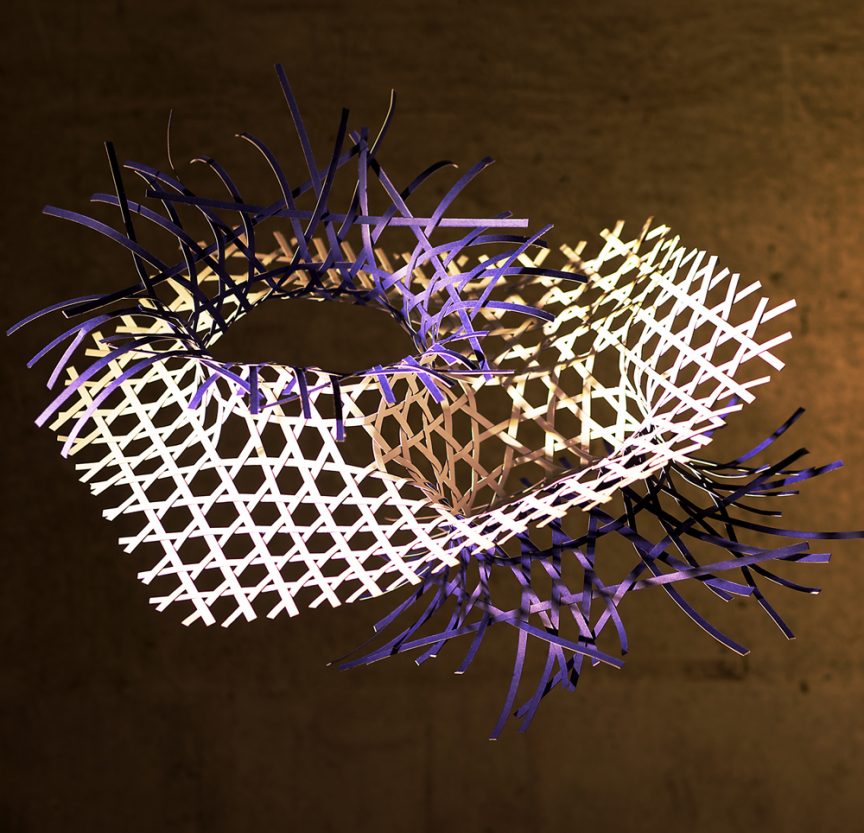Name: Alison Grace Martin
Which came first in your life, the science or the art?
I studied graphics in art school in the 1970’s, though I didn’t manage to make a career in design. I’m interested in the connections between art and science. My work explores underlying space forms in matter and natural growth. I build shapes from the inside out, trying to visualize/make visible the structures and shapes hidden within.
Which sciences relate to your art practice?
I study form and morphology. I take an interdisciplinary/undisciplined approach, criss-crossing borders of the inanimate and animate worlds of soft and hard materials, and gleaning concepts and methods of chemistry, physics, mathematics, and biology in my work.
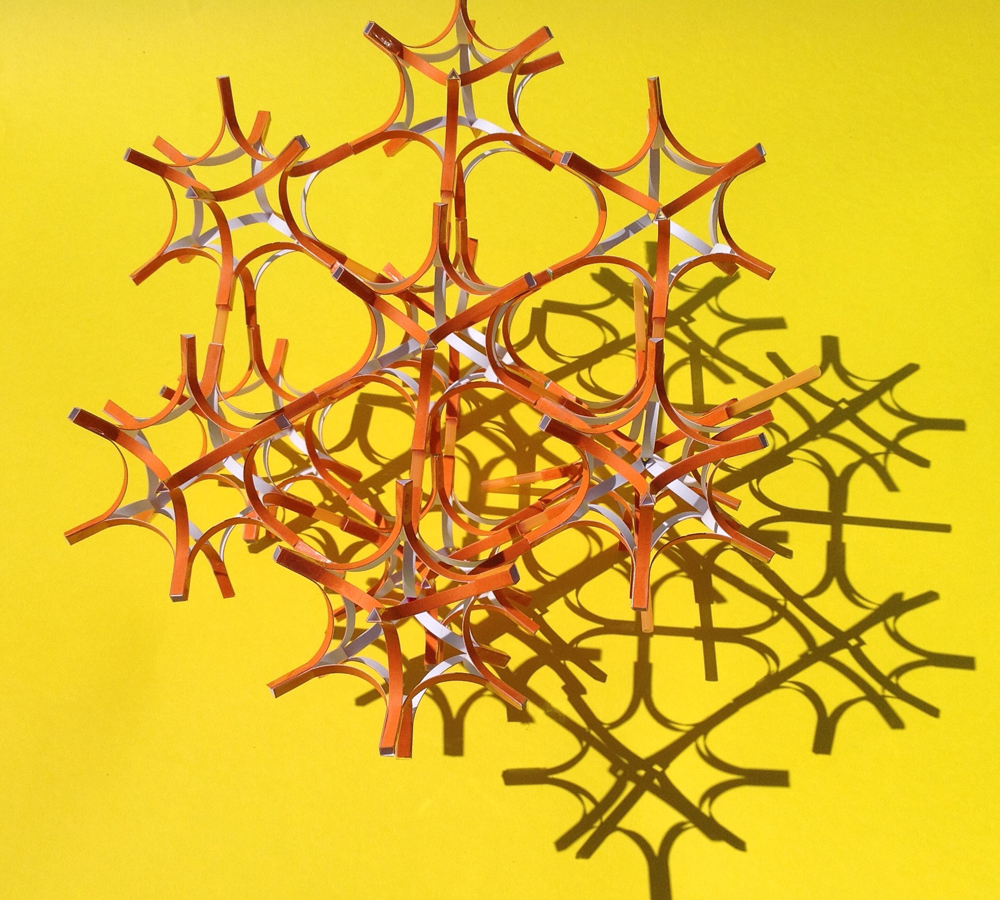
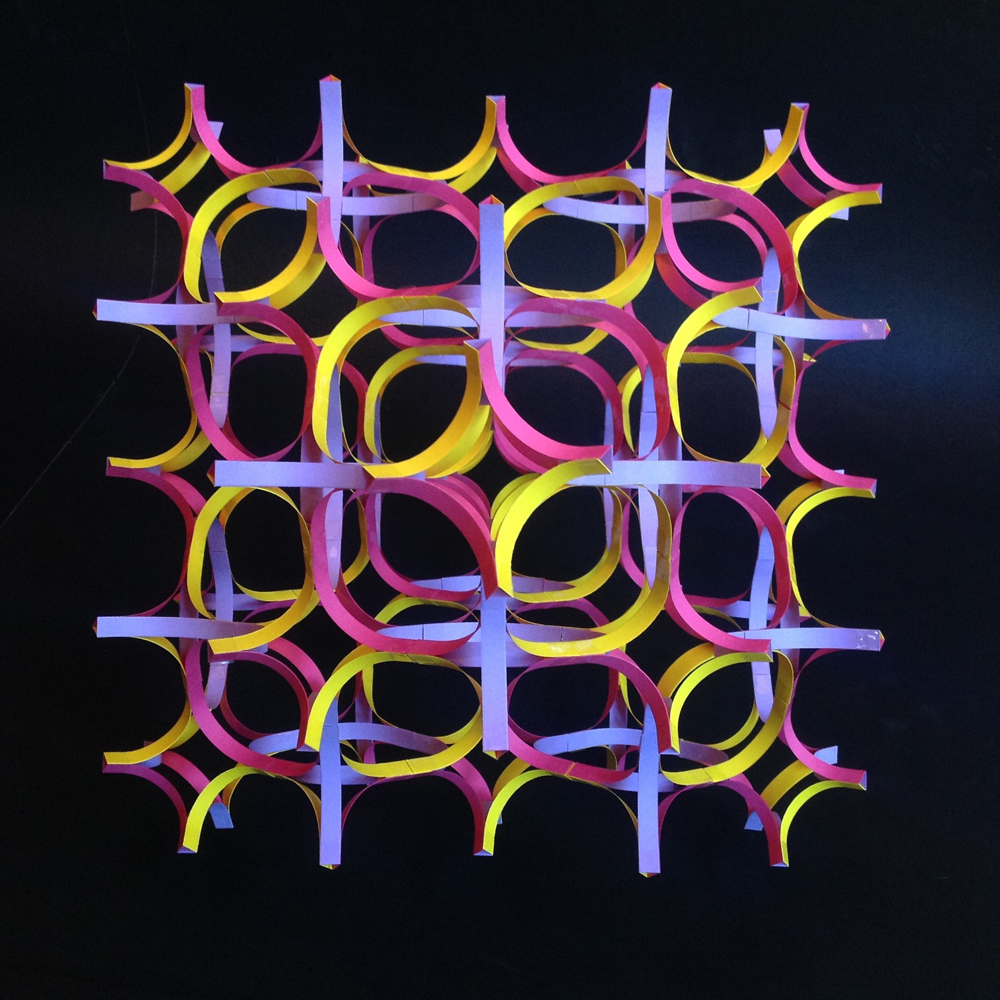
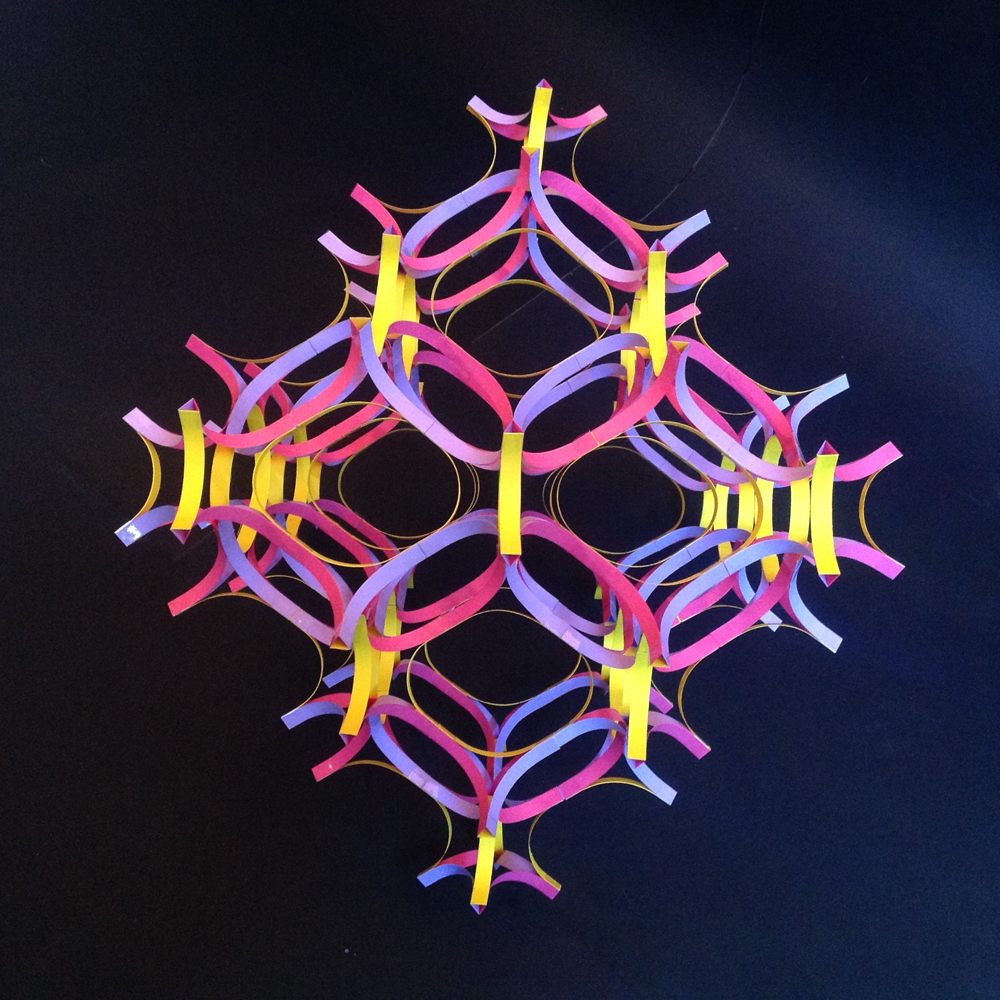
What materials do you use to create your artworks?
I’m happy with a limited vocabulary of materials, mostly just paper and bamboo, selected for the way they perform as parts of larger system of modular assembly, weaving or folding. At a very low cost and readily available, the bamboo grows in our garden and I get free paper offcuts from our local typographer.
I love making something out of nothing. I wonder if it may be possible to design from scratch within the constraints of a very low-tech craft based approach, forms which may turn out to be useful for structural, mechanical, and design applications.
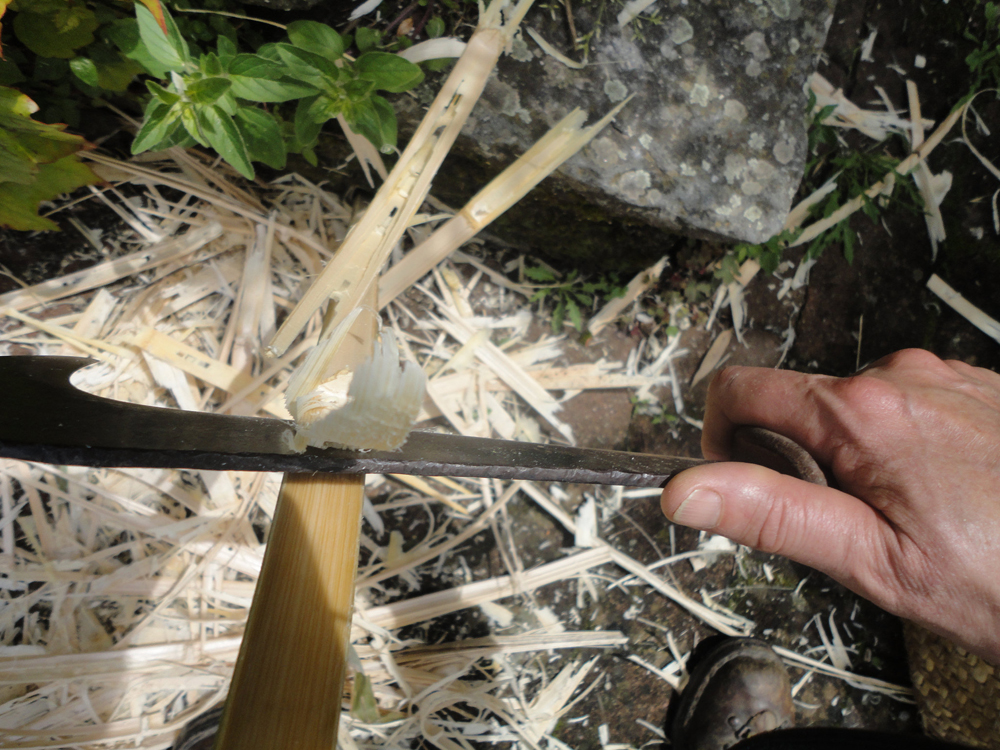
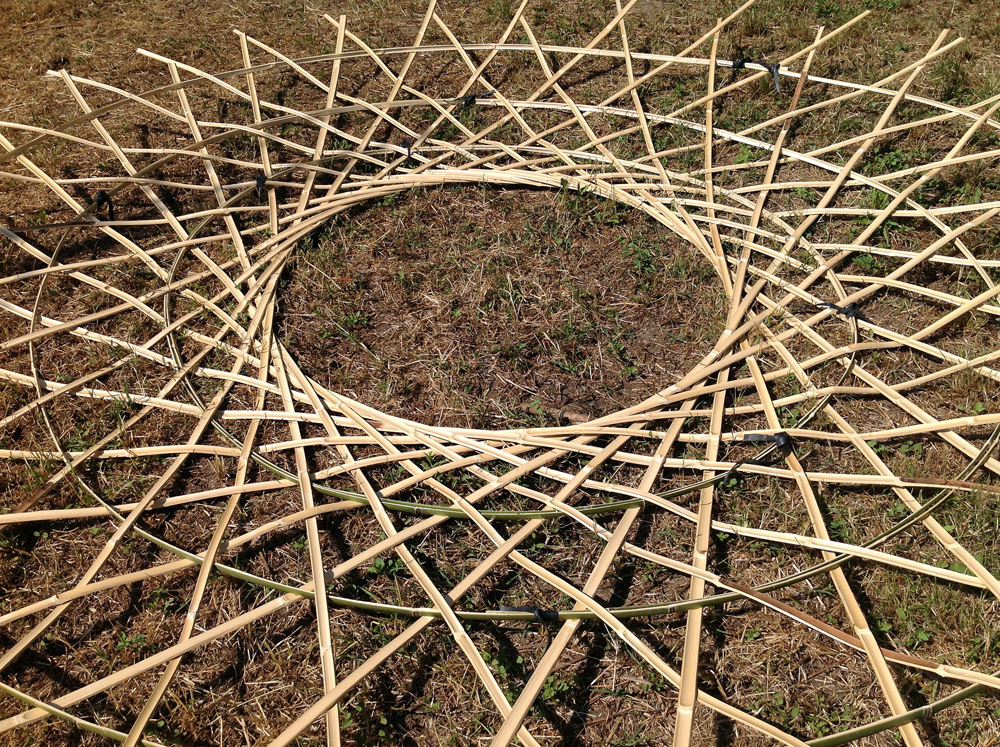
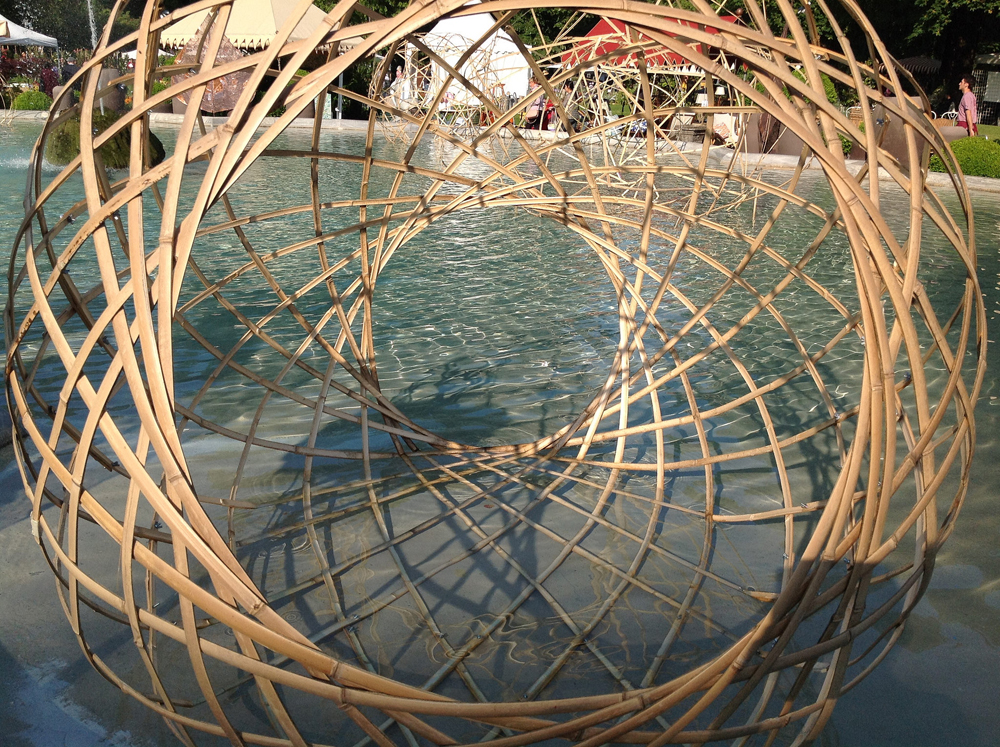
Which Artwork / Exhibition you are most proud of?
Winning the “Future Visions” contest organized by the International Association of Shell and Spatial Structures, for an innovative pavilion design. Various universities and companies from all over the world, including the prestigious Massachusetts Institute of Technology (MIT) and the engineering office ARUP, contributed and built a total of 28 pavilions. The pavilions offered a future vision of structural design and innovation, and were the outcome of (excellent) structural research.
My entry was built from bamboo, connected with nuts and bolts, and covered with a home-sewn lycra ‘skin’. Measuring 4 meters in diameter and weighing less that 50 kilos it was built from a construction kit of over 700 bamboo pieces grown in our back garden, by a team of 2 (my husband and I) in less than 2 days.


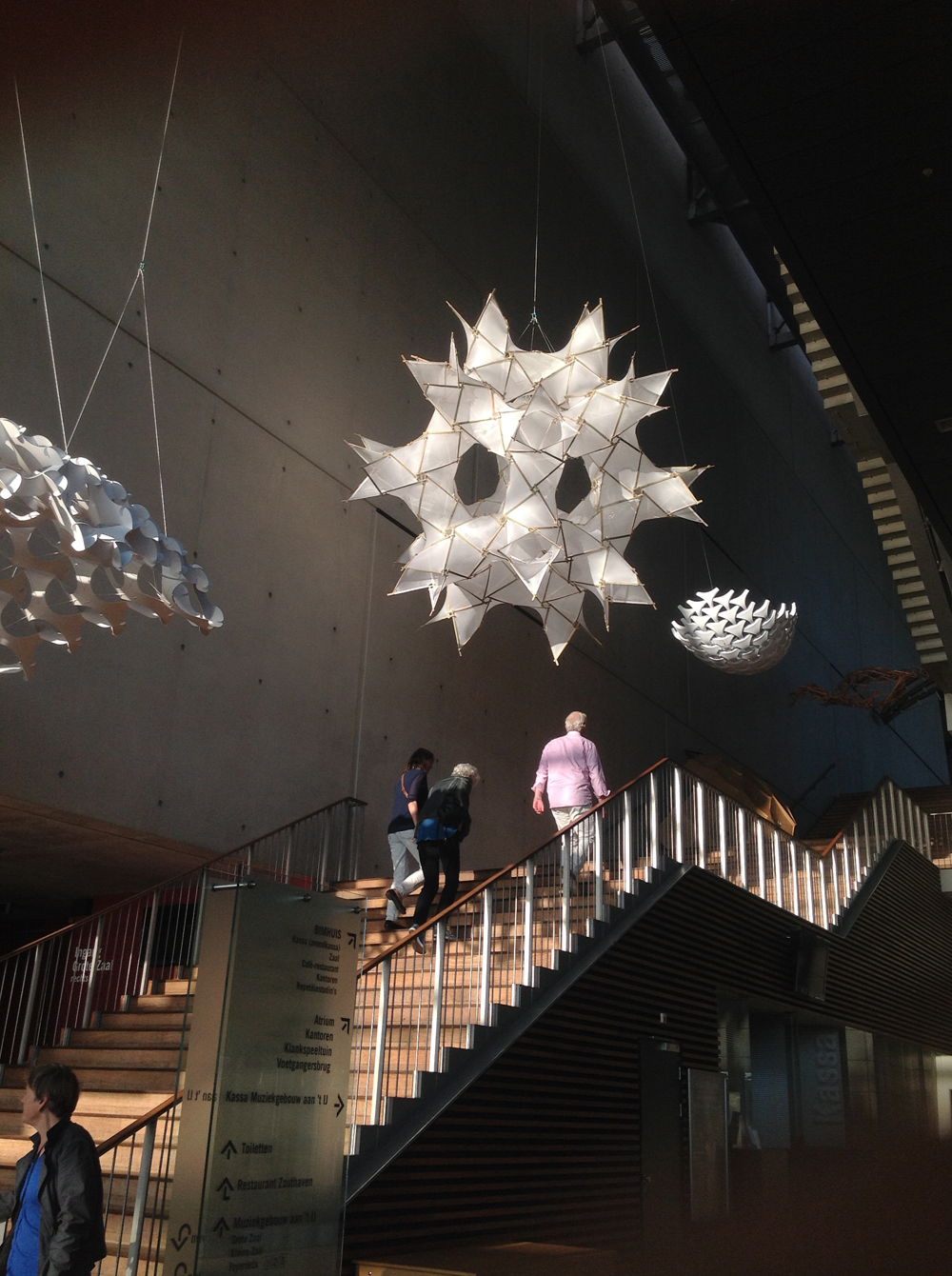
Which scientists and/or artists inspire and/or have inspired you?
I find the images in science are generally more inspiring than most of what’s in the contemporary art and architecture scene. I read widely; enjoy anything about the history of science, crystallography in particular. Alan L. Mackay writes on patterns, symmetry, crystallography, the role of shape in self-assembly; his aspiration “to see what all have seen but think what none have thought”.
Pre-war chemistry textbooks by Alexander Wells are amazing. At a time when tools were mainly paper, pencils, and model building, he had a stunning ability to analyze and classify 3D structures. His books are illustrated with his own hand drawn images and black and white photographs of his structural models.
I’m fond of sculptural wirework by Ruth Asawa. I really identify with her quote about raising a family, doing domestic chores, teaching, gardening, etc. while producing artwork:
“Sculpture is like farming… if you just keep at it, you can get quite a lot done.”
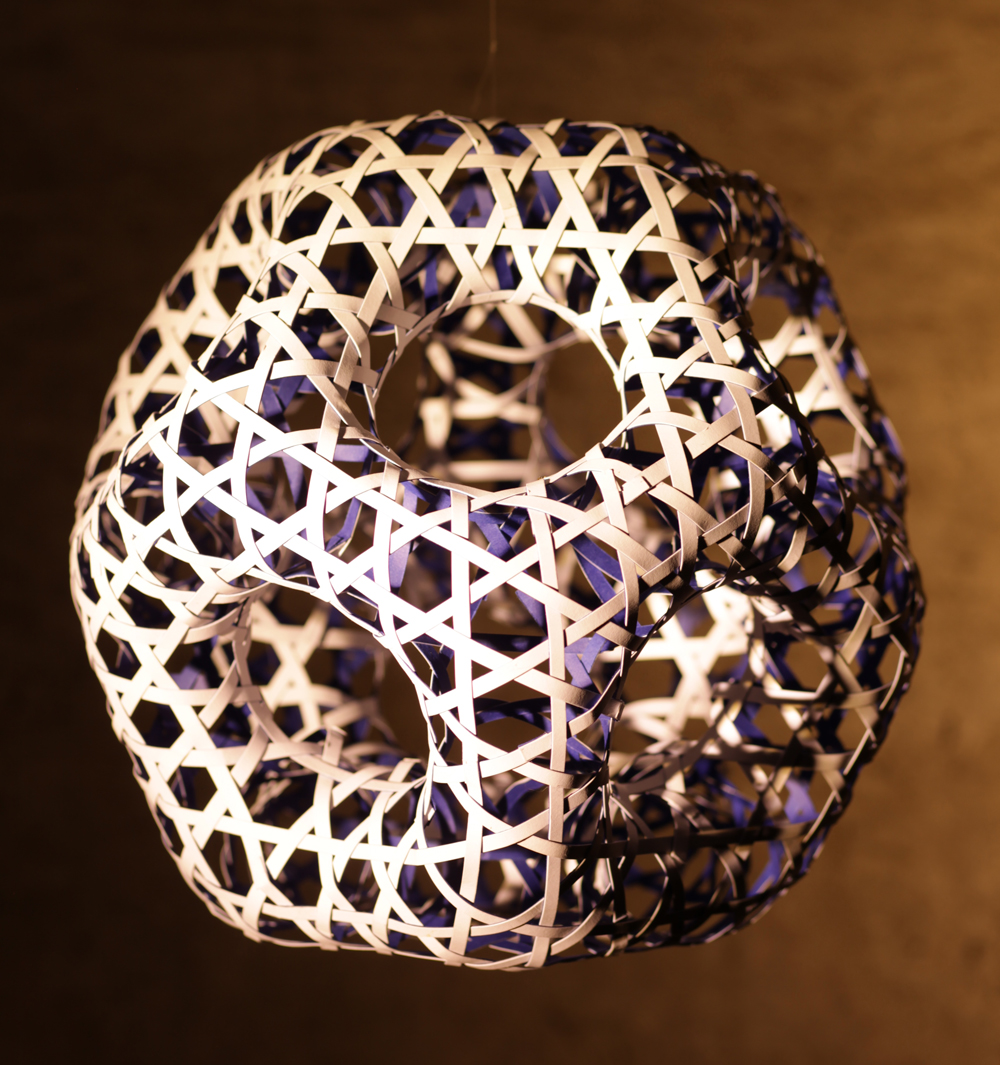
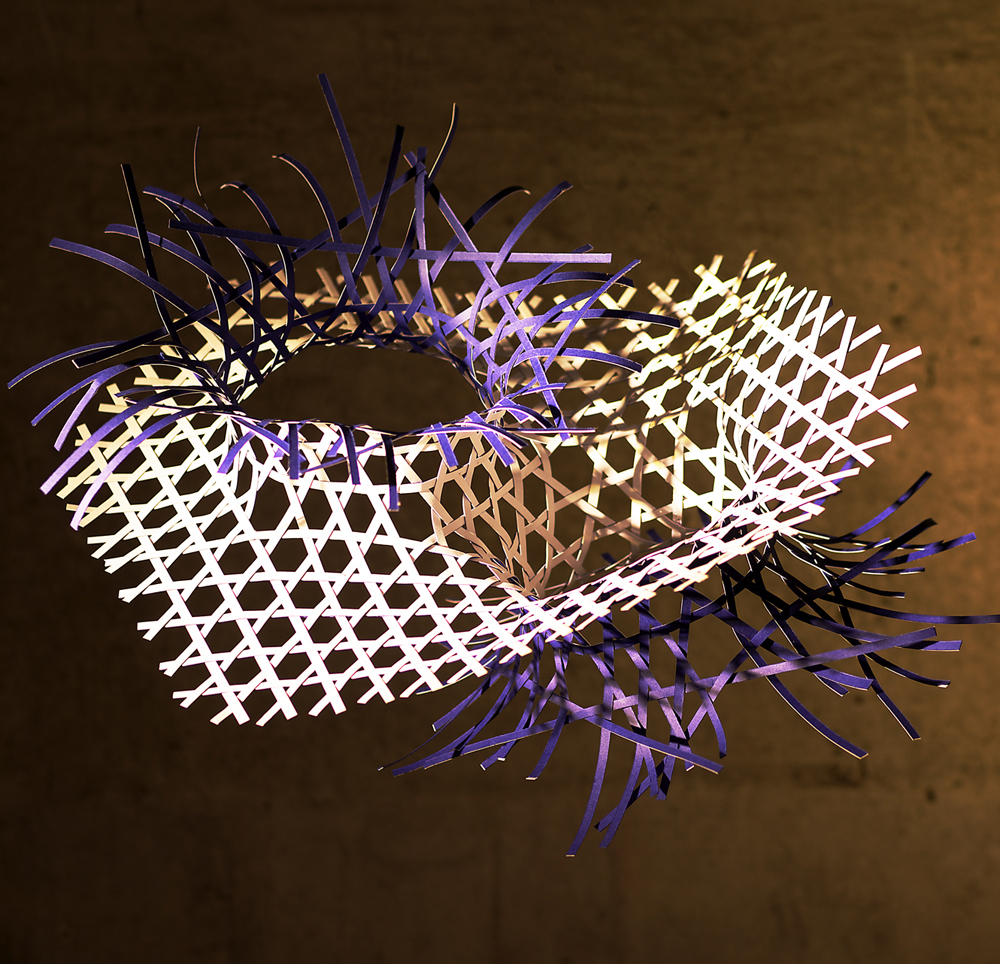
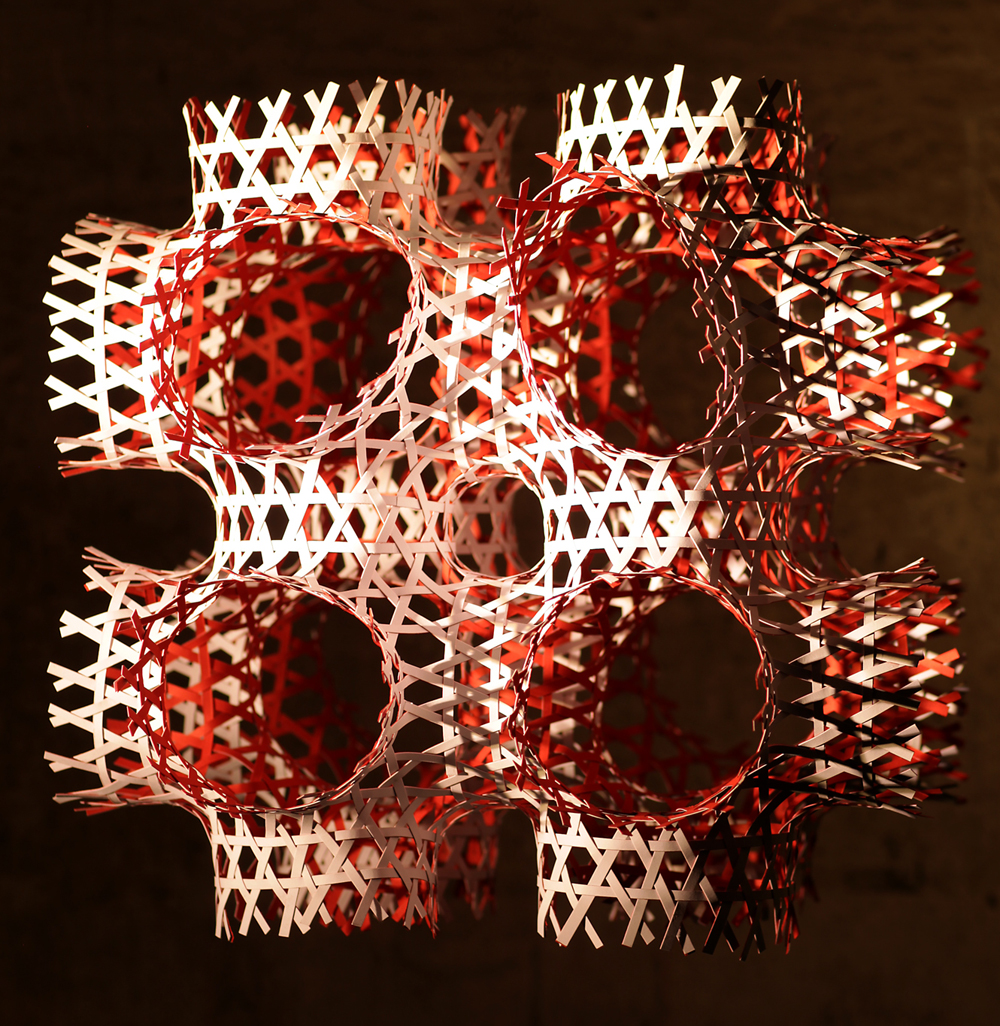
Is there anything else you want to tell us?
I’m interested in the principles and concepts define the shape-based design rules for the self-assembly. By following rules of pattern and reiteration, I can understand how complexity emerges from simplicity. During the slow process of hand-building physical models from regular elements, and through spending an extended period of time working on a piece, I have a chance to reflect and gain more understanding of the possibilities of a form. It’s not clear to me how/whether this would occur if I were able to take the high tech/digital design/3D printer route preferred by many designers.
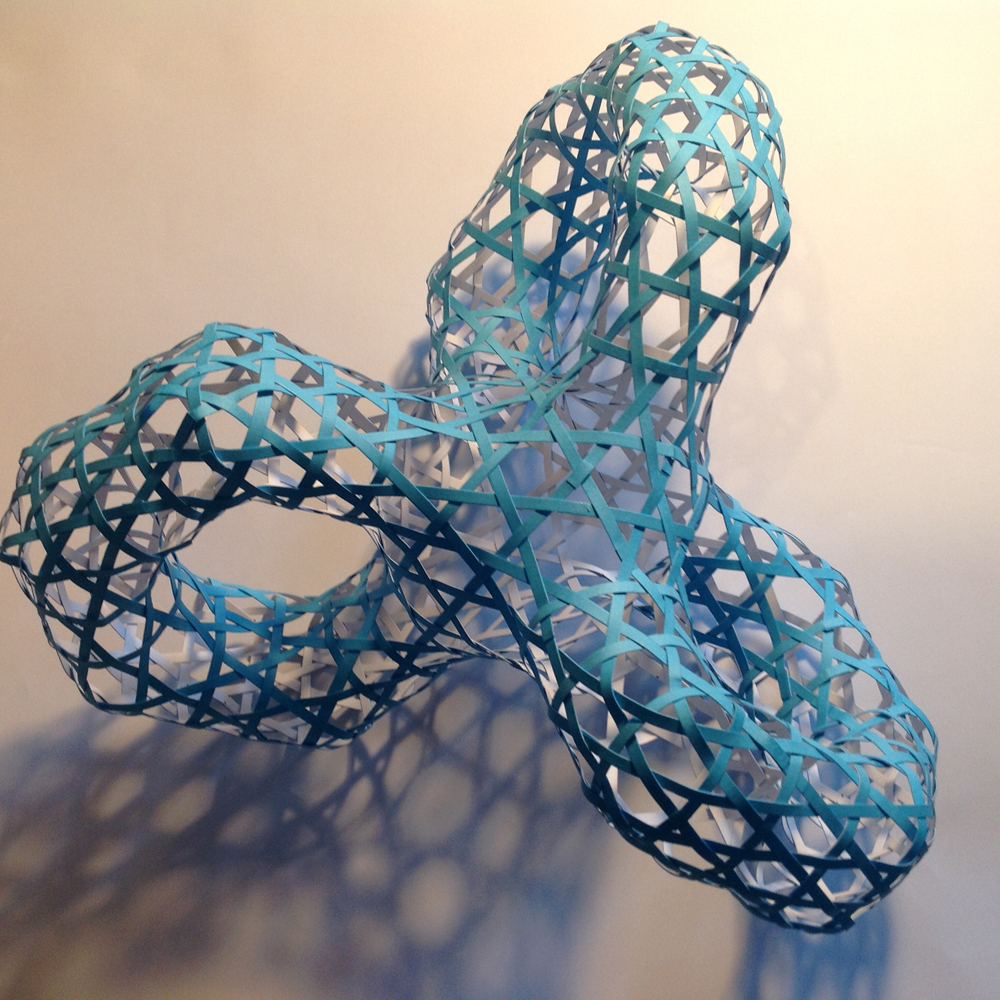

Share this Post

